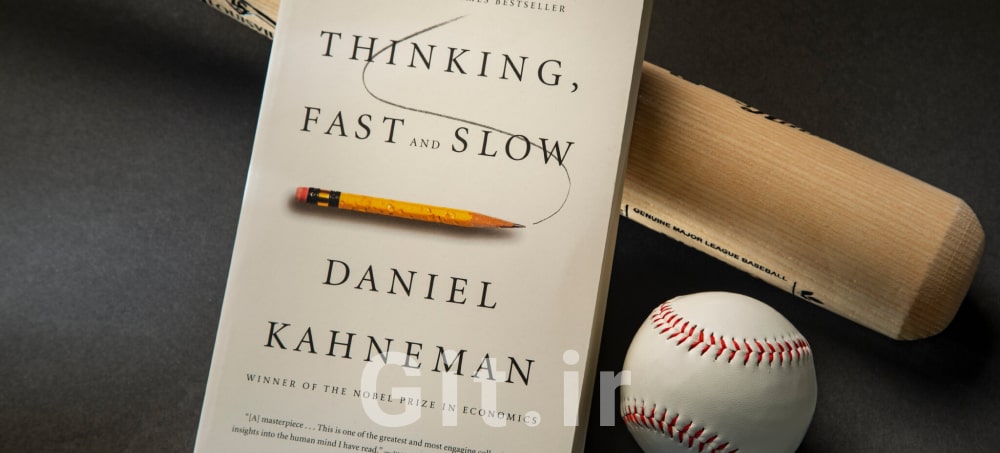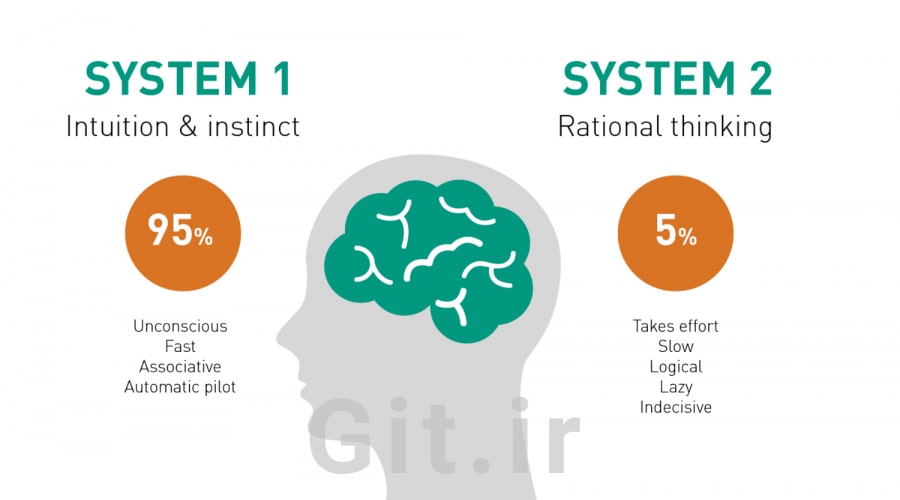Summary of Thinking, Fast and Slow by Daniel Kahneman

The book Thinking, Fast and Slow by Daniel Kahneman, the renowned author of Noise, provides an in-depth analysis of how the human mind works and its influence on our decision-making and judgments. This book examines systematic errors known as cognitive biases, which can be predicted under certain conditions. For instance, it is anticipated that when a charismatic and confident speaker takes the stage, the audience tends to evaluate their opinions more favorably than they actually deserve. This type of bias is known as the "halo effect," illustrating how a person's appearance and presence can subtly influence our judgments and decision-making processes.
Systematic Errors and Cognitive Biases
A significant portion of this book focuses on examining cognitive biases and emotional distortions. Highlighting these errors does not question or undermine human intelligence. Most people are mentally sound most of the time, and their judgments and actions are generally appropriate. In various aspects of life, individuals often allow their perceptions and feelings to guide their decisions, having confidence in their subjective beliefs and preferences, which are often justifiable. However, this is not always the case, as we frequently remain overconfident even when we are making mistakes. As a result, an impartial observer is often better positioned to identify cognitive errors than the individual themselves.
Thinking Fast and Slow: System 1 and System 2
When faced with a problem, whether it's deciding on a chess move or making an investment in stocks, your unconscious mind does its best to provide a solution. If you have expertise related to the topic, the solution that comes to mind is likely to be correct. However, there are times when more controlled thinking is necessary. In Thinking, Fast and Slow, Daniel Kahneman refers to these two types of thinking—intuitive and analytical—as System 1 and System 2.

System 1: Fast and Automatic
System 1 operates automatically and very quickly. This system requires little effort, and individuals have no sense of voluntary control over it. System 1 is responsible for rapid information processing and immediate decision-making, often based on previous cognitive patterns and past experiences. It is highly effective in familiar and repetitive situations, allowing us to respond quickly and efficiently without the need for deep thought.
System 2: Slow and Deliberate
System 2 focuses attention on complex and effortful mental activities, such as intricate calculations or strategic decision-making. The operation of System 2 is often accompanied by the subjective experience of agency, choice, and concentration. This system becomes active in situations that require careful analysis, planning, and logical evaluation. While System 2 operates more slowly than System 1, it is essential for tackling complex and unusual problems.
🎧 Listen to the audio summary of "Thinking, Fast and Slow"
Table of Contents for Thinking, Fast and Slow
Two Systems:
The first section explores the fundamental elements of the dual-system approach to judgment and choice, explaining the differences between the automatic functioning of System 1 and the controlled functioning of System 2. It also illustrates how associative memory, the core of System 1, continuously creates coherent interpretations of events in the surrounding world. One of the goals of this section is to introduce a language for thinking and talking about the mind. This chapter demonstrates how both systems are constantly interacting in our daily lives and how we can use this knowledge to improve our judgments and decision-making.
Mental Shortcuts and Biases:
The second section delves into studies related to judgments derived from mental shortcuts, addressing a broader question: why is thinking statistically so challenging for us? This section examines mental shortcuts such as availability, representativeness, and cognitive skills, exploring how these shortcuts facilitate quick decision-making while simultaneously leading to cognitive errors.
Overconfidence:
The third section discusses issues related to statistical thinking and describes the confusing limitations of the mind, including individuals' excessive trust in what they believe they know and their evident inability to acknowledge the extent of their ignorance and the uncertainty of the world they inhabit. This section illustrates how high self-confidence and overconfidence can lead to incorrect and irrational decision-making.
Choices:
The fourth section focuses on a discussion related to economics concerning the nature of decision-making and the assumption of rationality among economic agents. This part of the book employs the dual-system model to present the current perspective on key concepts of prospect theory. Prospect theory explains how individuals make their economic decisions based on their subjective values and probabilities, and how these decisions may deviate from economic logic.
The Two Selves:
The fifth section describes a recent study that introduces the distinction between the two selves—namely, the experiencing self and the remembering self. These two selves do not share common inclinations and often conflict with each other. This section illustrates how our momentary experiences (the experiencing self) may differ from the memories we hold of those experiences (the remembering self), and how these differences can influence our decision-making and overall satisfaction with life.
Conclusion:
In the conclusion section, the implications of the three distinctions presented in this book are examined: the distinction between the experiencing self and the remembering self, the distinction between the concepts of different agents in classical and behavioral economics (which draws concepts from psychology), and the distinction between the automatic System 1 and the effortful System 2. This section demonstrates how these distinctions can enhance our understanding of human behavior and improve our methods of decision-making and judgment.
Ending Notes
Thinking, Fast and Slow is one of the top books in the fields of business and psychology, serving as a valuable resource for a deeper understanding of how the mind works and how to optimize your decision-making. By reading this work, you can avoid cognitive errors that may occur in your daily life and make better decisions. This book helps you understand how your mind operates and how you can use this knowledge to improve your life.